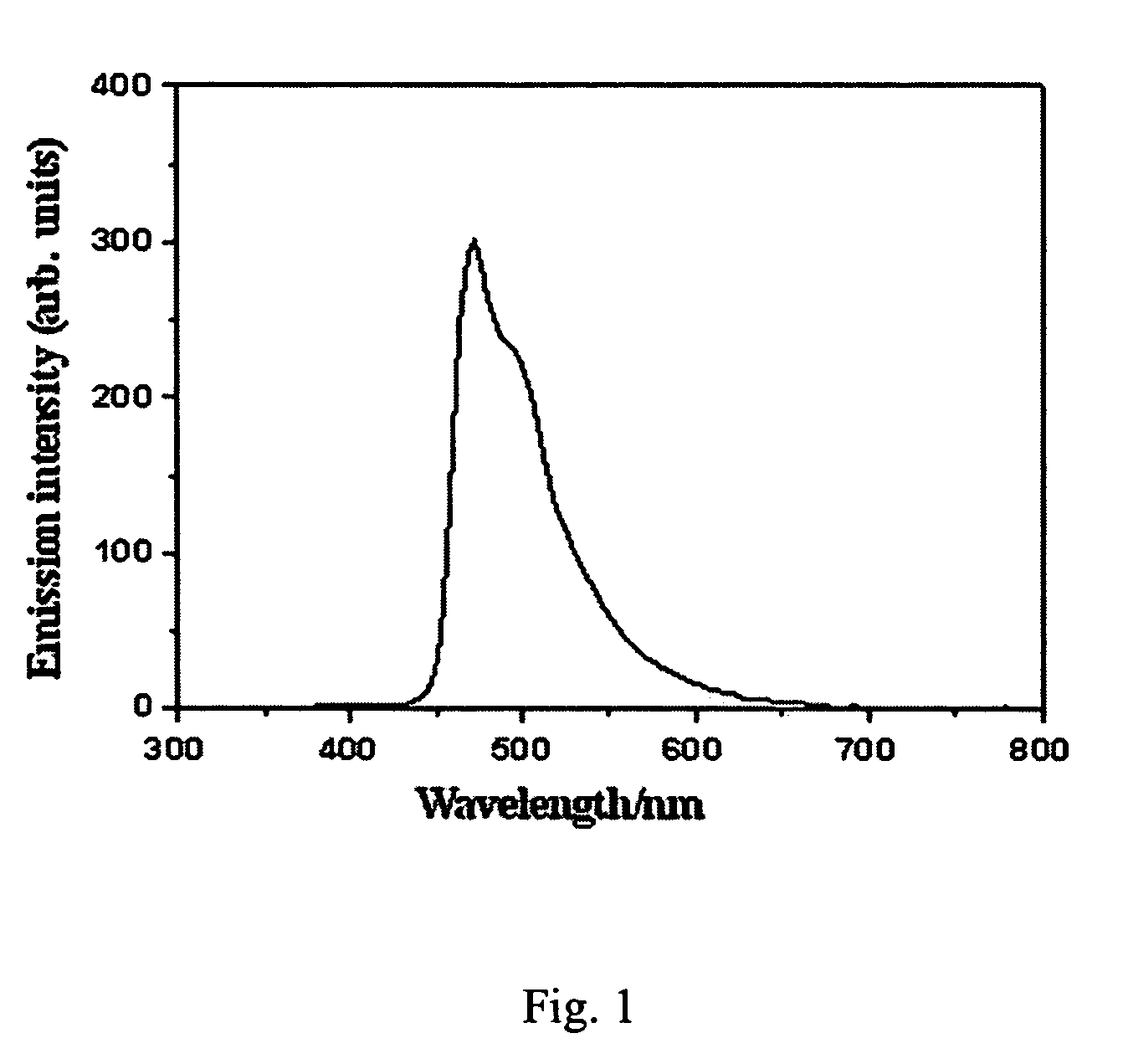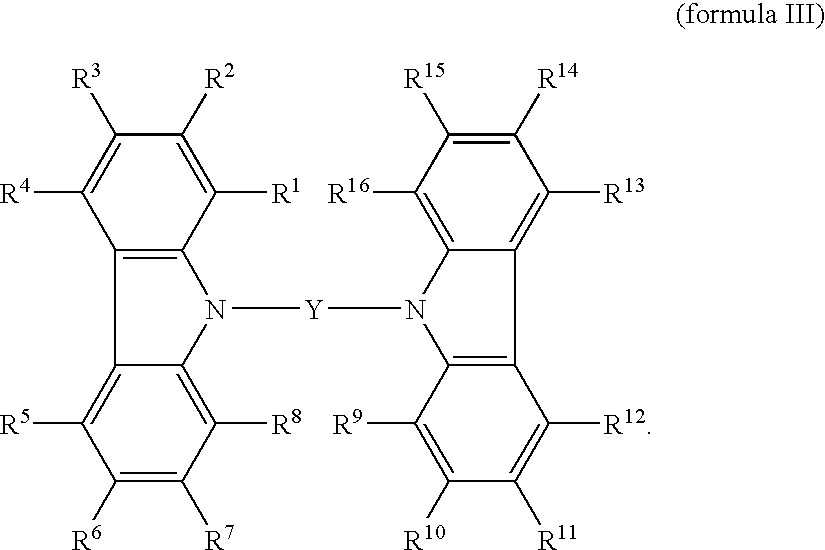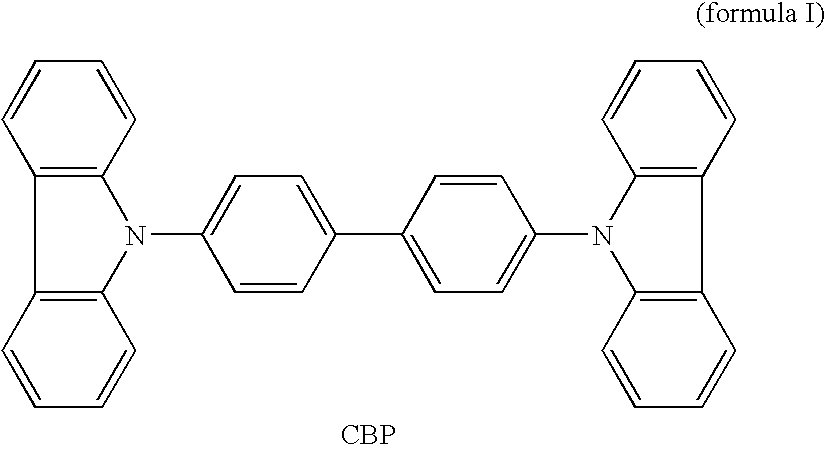Carbazole derivative and its use in electroluminescent devices
a carbazole derivative and electroluminescent device technology, applied in the direction of organic semiconductor devices, discharge tube luminescnet screens, organic chemistry, etc., can solve the problems of limiting the external quantum efficiency of fluorescent oleds (less than 5%), energy transfer between alqsub>3 /sub, and the quantum efficiency and stability of devices cannot reach the application level, so as to reduce the converse energy transfer, improve the efficiency and lifetime of oleds (especially blue tripl
- Summary
- Abstract
- Description
- Claims
- Application Information
AI Technical Summary
Benefits of technology
Problems solved by technology
Method used
Image
Examples
example 1
Synthesis of N,N′-Dicarbazolyl-1,4-Dimethylene-Benzene (Compound No. 2)
[0048]The compound were synthesized by the condensation reaction of aromatic halides and carbazole according to the method reported in the literature (T. Yamamoto, et al. Tetrahedron Lett. 1998, 84, 5583.; B. K. Koene, et al. Chem. Mater. 1998, 10, 2235): 5.01 g (0.03 mol) carbazole was dissolved in 100 ml absolute THF to form a solution, then 0.72 g (0.03 mol) NaH was added very gradually to the solution. When the hydrogen was exhausted, 1.75 g (0.01 mol) 1,4-Bis-chloromethyl-benzene was added, then refluxed for 24 h, the mixture was cooled to room temperature, filtered and gave 3.62 g white solid with yield of 80%. The resulting product was identified to be compound No. 2 according to the following data. Mass spectrum: m / e=436. Chemical analysis: Found [C(88.12%), H(5.39%), N(6.50%)]; Calcd [C(88.07%), H(5.50%), N(6.42%)].
example 2
Synthesis of Compound No. 3
[0049]Compound No. 3 was synthesized in the same manner as compound No. 2, except substituting 1,4-Bis-chloromethyl-2,5-dimethyl-benzene for 1,4-Bis-chloromethyl-benzene. Yield was 78%. Mass spectrum: m / e=464. Chemical analysis: Found [C(88.05%), H(5.99%), N(6.13%)]; Calcd [C(87.93%), H(6.03%), N(6.03%)].
example 3
Synthesis of Compound No. 4
[0050]Compound No. 4 was synthesized in the same manner as compound No. 2, except substituting 3,6-Dimethyl-9H-carbazole for carbazole. Yield was 64%. Mass spectrum: m / e=492. Chemical analysis: Found [C(87.65%), H(6.53%), N(5.62%)]; Calcd [C(87.77%), H(6.55%), N(5.69%)].
PUM
| Property | Measurement | Unit |
|---|---|---|
| triplet energy | aaaaa | aaaaa |
| glass transition temperature | aaaaa | aaaaa |
| glass transition temperature | aaaaa | aaaaa |
Abstract
Description
Claims
Application Information
 Login to View More
Login to View More - R&D
- Intellectual Property
- Life Sciences
- Materials
- Tech Scout
- Unparalleled Data Quality
- Higher Quality Content
- 60% Fewer Hallucinations
Browse by: Latest US Patents, China's latest patents, Technical Efficacy Thesaurus, Application Domain, Technology Topic, Popular Technical Reports.
© 2025 PatSnap. All rights reserved.Legal|Privacy policy|Modern Slavery Act Transparency Statement|Sitemap|About US| Contact US: help@patsnap.com



